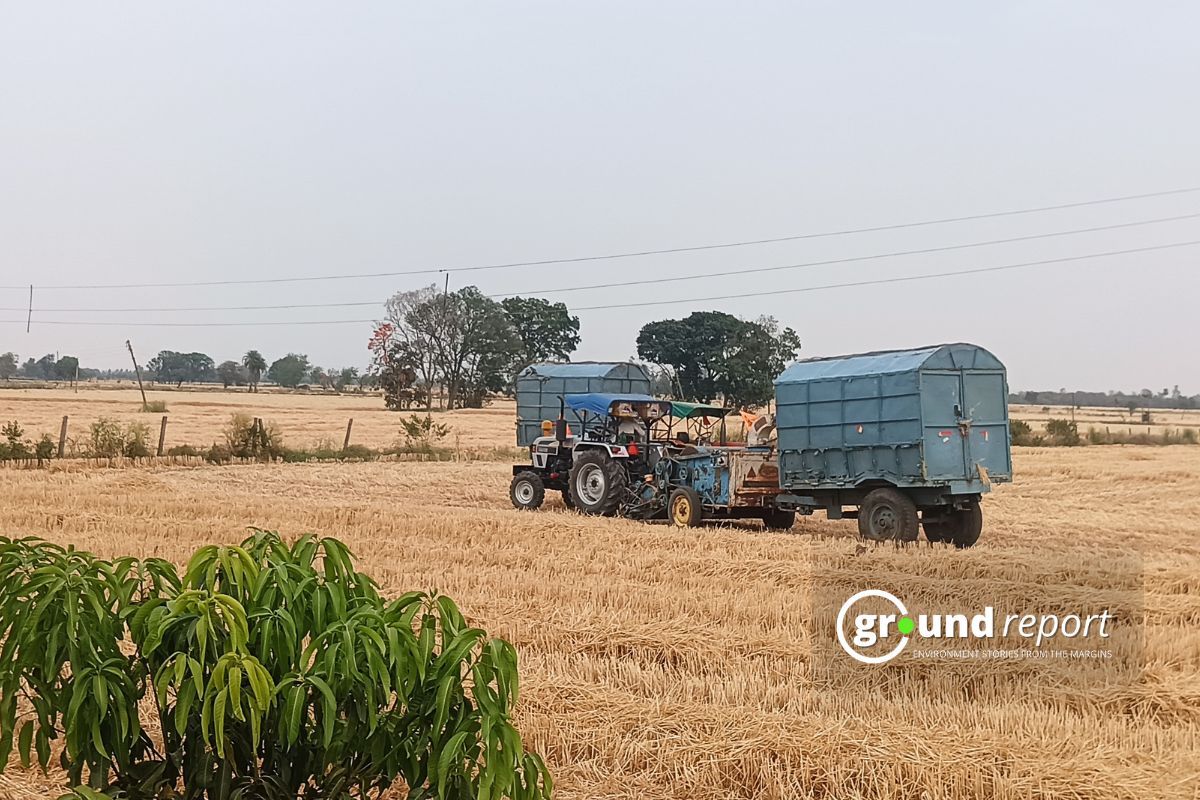Since the 1970s, around 1.5 billion hectares of predominantly tropical forests have been lost worldwide to tobacco cultivation, contributing up to 20% to the annual increase in greenhouse gas emissions. This loss of forests is the result of clearing land for tobacco cultivation and burning wood during the curing process of tobacco leaves. Amazingly, an entire tree is needed to produce 300 cigarettes.
Land clearing for Tobacco cultivation
Approximately 200,000 hectares of land are cleared each year for tobacco growing and curing, representing around 5% of total national deforestation. These practices disproportionately affect tobacco-producing regions such as southern Africa, the Middle East, Southeast Asia, South America and the Caribbean.
Tobacco cultivation has a detrimental impact on soil quality. Fertile land that could be used to grow nutritious crops is instead used to grow tobacco, leading to soil depletion. This depletion contributes to food insecurity and nutritional challenges.
Remediation of the soil after tobacco cultivation is expensive, with an estimated cost of US$20.6 million to reverse the negative effects on soil in Bangladesh caused by just one year of tobacco cultivation. Additionally, desertification attributed to tobacco cultivation is now being observed in countries such as Brazil, India, Jordan, and Cuba.
Impact on Water Resources
Water supplies are significantly affected by the growth and use of tobacco. The full life cycle of a single cigarette requires approximately 3.7 liters of water, including the growing, manufacturing, distribution, use and disposal processes. Tobacco cultivation depletes the water table, as the growing stage alone uses as much water as a person would need for an entire year.
In Brazil, the third largest tobacco producer, approximately 263,813,700,000 liters of water were used to produce the annual supply of cigarettes in 2015. This amount of water could hydrate approximately 3.7 million people, equivalent to the population of its capital, Brasília, for one year.
Cigarette butts, one of the most polluting and toxic substances found in bodies of water, take about 10 years to decompose, releasing nicotine and chemicals into the surrounding ecosystems. Studies have shown that exposure to cigarette butts can be detrimental to aquatic life and lead to fish kills.
Air Pollution from tobacco consumption
The cultivation and use of tobacco contribute significantly to air pollution. Producing a single cigarette emits 14 g of CO2 over its life cycle, and overall tobacco production contributes nearly 84 million metric tons of CO2-equivalent emissions per year, which is equivalent to 280,000 rockets launched into the world outer space. Tobacco smoke, which contains carbon dioxide, methane, and nitrous oxides, increases air pollution levels, both indoors and outdoors.
Tobacco use also contributes to littering. Globally, each year approximately 4.5 trillion cigarettes are discarded in the environment. Most commercial cigarettes have poorly degradable cellulose acetate filters, which become a source of microplastic contamination.
Approximately 65% of smokers incorrectly dispose of cigarette butts, further exacerbating the littering problem. Cigarette use releases more than 7,000 chemicals into the environment, 70 of which are known carcinogens.
Electronic cigarettes (e-cigarettes) also raise environmental concerns. Improper disposal of e-cigarette cartridges and batteries, which are often not reusable or recyclable, results in harmful environmental impacts. The materials used in these products, such as metal coils, plastics, and batteries, do not readily biodegrade and contribute to e-waste pollution.
The use of smokeless tobacco products such as gutkha and pan masala packaged in sachets/plastic bags has become a new environmental concern. Improper disposal of these plastic packaging materials poses risks to the environment, in particular to marine biology.
Health Risks for tobacco farmers
The environmental impact of tobacco extends to human health. Tobacco growers face health risks from exposure to nicotine, pesticides, and other chemicals. Green tobacco sickness (GTS), a form of nicotine poisoning, affects approximately 1 in 4 tobacco growers. Elevated levels of aluminium and arsenic in the blood can also be seen in farmers due to exposure to pesticides.
Children working on tobacco plantations are particularly vulnerable, experiencing nicotine absorption through the skin and facing increased risks of kidney dysfunction and smoking prevalence. Women involved in tobacco farming are disproportionately affected, with an increased risk of infertility and reproductive problems.
Tobacco consumption entails important humanistic and economic burdens. Smoking is linked to various health problems such as cardiovascular diseases, respiratory diseases, cancer, diabetes, hypertension, and more.
Passive smoking causes air pollution, leading to the premature death of 1.2 million people worldwide every year. The economic cost of smoking, including healthcare costs and lost productivity, amounts to approximately 1.8% of the global gross domestic product (GDP) per year.
Keep Reading
- What makes Oman’s Yiti a sustainable city?
- Clean energy manufacturing market to reach $790B by 2030: IEA
- How Everest is turning into a garbage filled tourist destination?
Follow Ground Report for Climate Change and Under-Reported issues in India. Connect with us on Facebook, Twitter, Koo App, Instagram, Whatsapp and YouTube. Write us on GReport2018@gmail.com.









